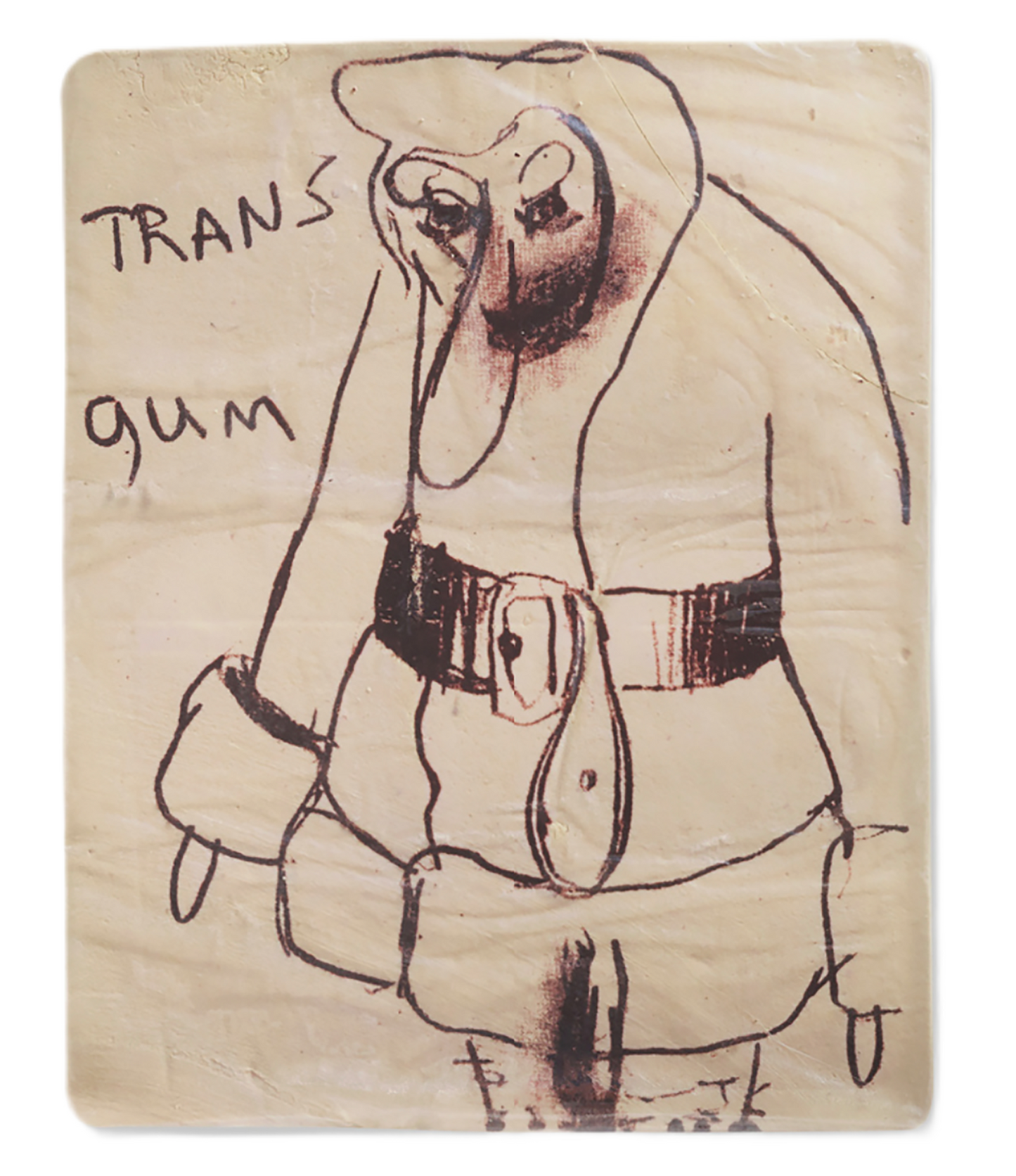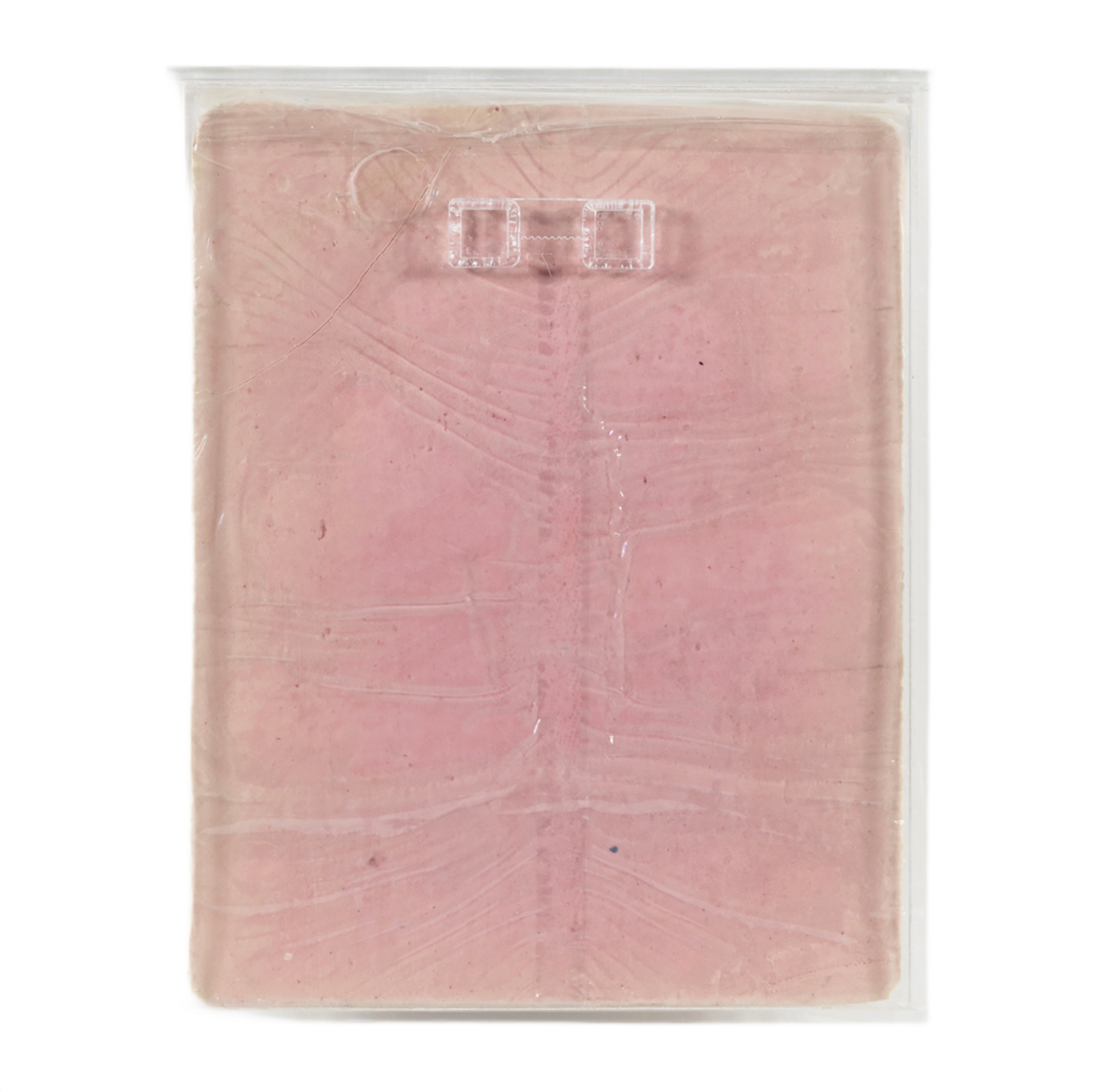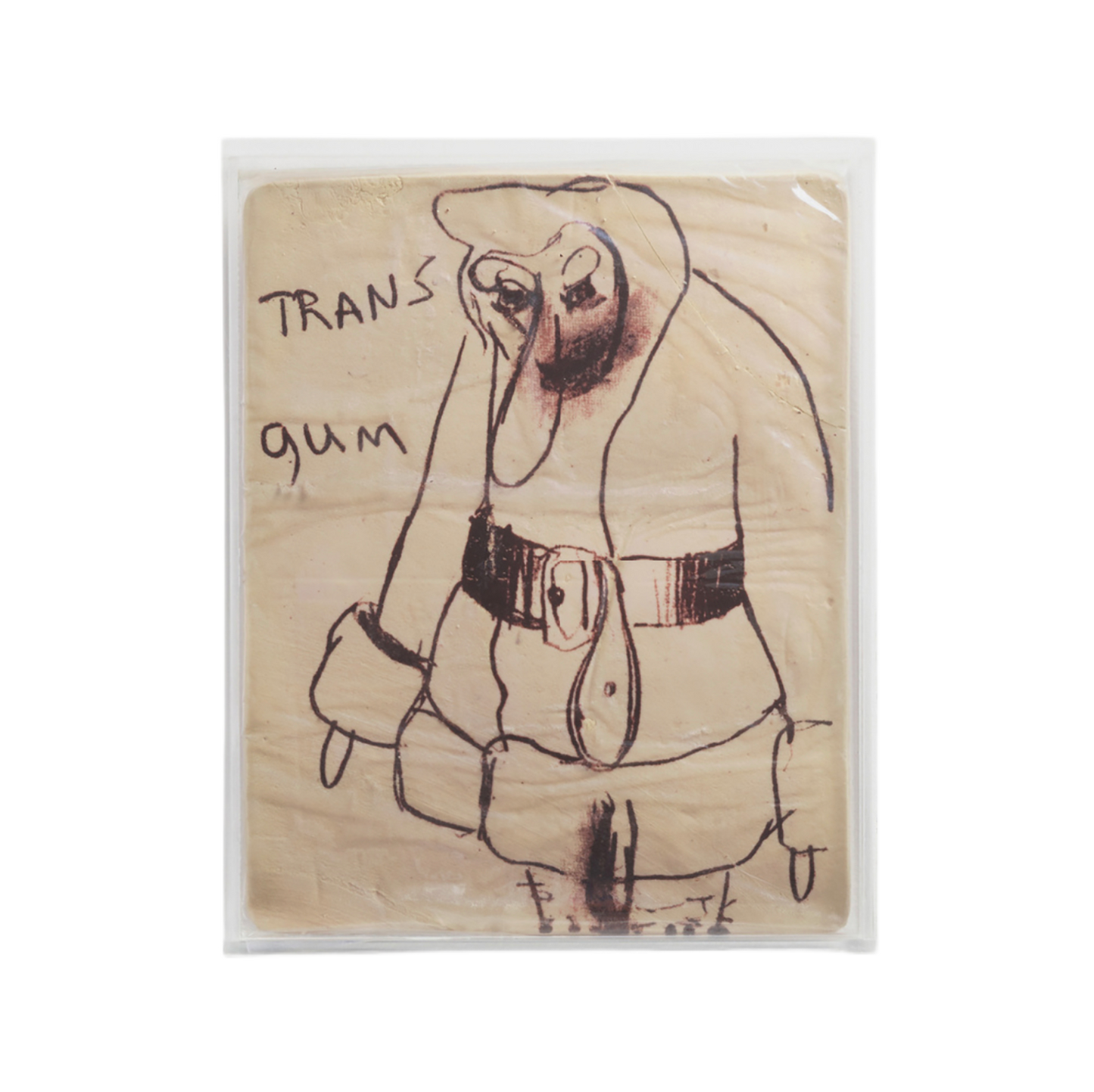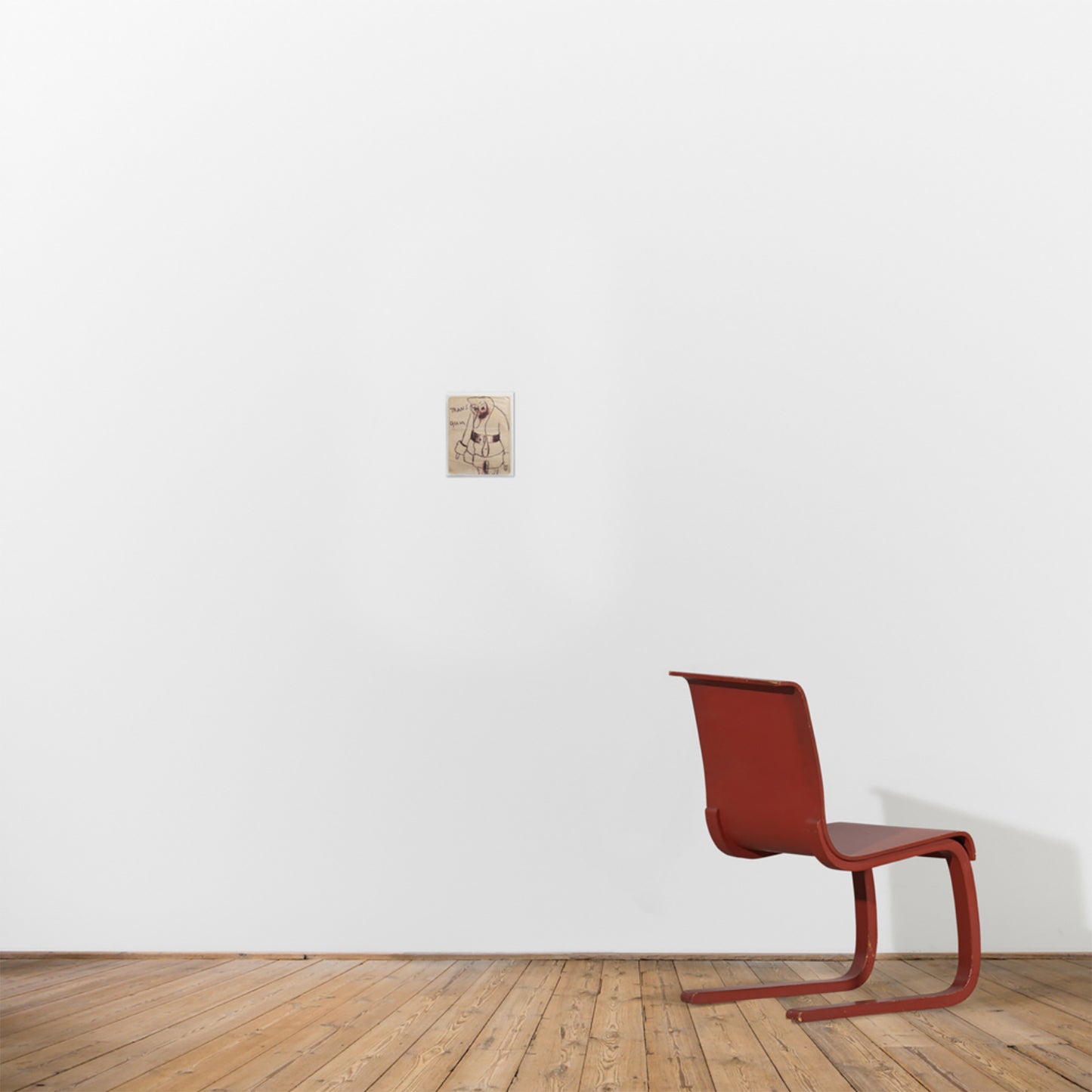PAUL McCARTHY
PAUL McCARTHY / TRANS Gum
PAUL McCARTHY / TRANS Gum
Couldn't load pickup availability
Paul McCarthy
TRANS Gum 2001
Silkscreen print on chewing gum
25 x 21cm
The work is sealed in plastic bag and framed behind acrylic measuring. Minor attenuation to chewing gum and media. Transferred media from lower edge of work to plastic wrapping.
Edition: 30
Incredibly rare single sheet of printed edible chewing gum with a reproduced drawing of a McCarthy evil Santa on it. These eat art object multiples turned out to be hugely fragile and many broke and cracked during transit or on the magazine shelves. This example is in overall good condition. 3cm break to upper right corner held in place by plastic wrapping that aligns well.
Paul McCarthy is widely considered to be one of the most influential and groundbreaking contemporary American artists. Born in 1945, and raised in Salt Lake City, Utah, he first established a multi-faceted artistic practice, which sought to break the limitations of painting by using unorthodox materials such as bodily fluids and food. He has since become known for visceral, often hauntingly humorous work in a variety of mediums—from performance, photography, film and video, to sculpture, drawing and painting.
During the 1990s, he extended his practice into installations and stand-alone sculptural figures, utilising a range of materials such as fiberglass, silicone, animatronics and inflatable vinyl. Playing on popular illusions and cultural myths, fantasy and reality collide in a delirious yet poignant exploration of the subconscious, in works that simultaneously challenge the viewer’s phenomenological expectations.
Whether absent or present, the human figure has been a constant in his work, either through the artist‘s own performances or the array of characters he creates to mix high and low culture, and provoke an analysis of our fundamental beliefs. These playfully oversized characters and objects critique the worlds from which they are drawn: Hollywood, politics, philosophy, science, art, literature, and television. McCarthy’s work, thus, locates the traumas lurking behind the stage set of the American Dream and identifies their counterparts in the art historical canon.








